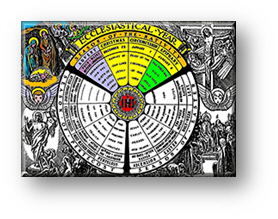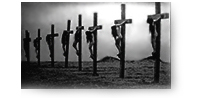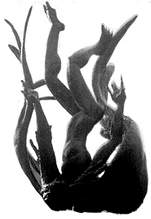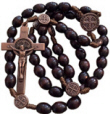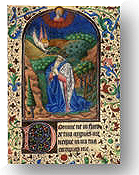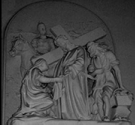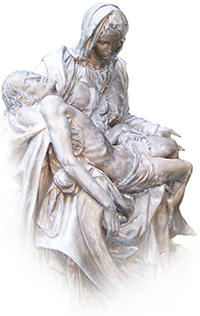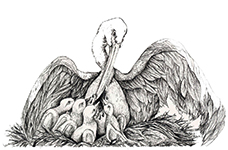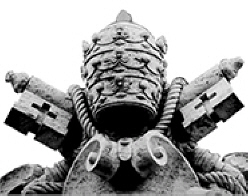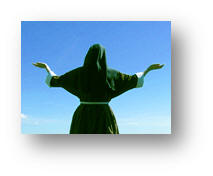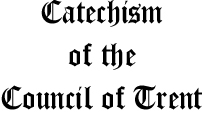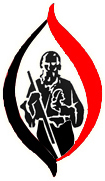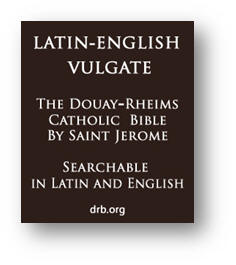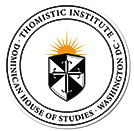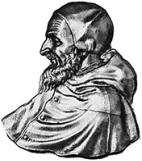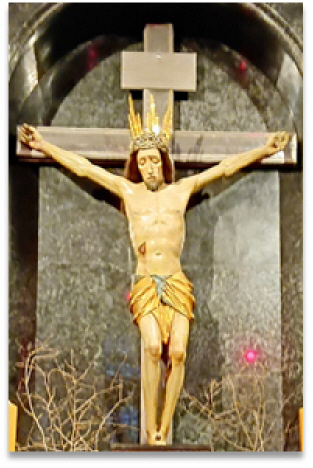|
|
|
“I remember 16 August most vividly, for that was
when the Cathedral caught fire. There was nobody
inside at the time; our posts had been abandoned
and our fellow fighters had withdrawn as the great
blaze took hold, spreading with terrifying speed.
At one point I found myself in the Cathedral with
my friend Teresa Potulicka-Łatyńska. Through the
smoke we glimpsed a Priest standing on the altar
in the Baryczka Chapel, trying to lift down the
Crucifix of Our Lord. Years later I learned that
he was Father Wacław Karłowicz, who operated under
the pseudonym “Andrzej Bobola.” No one else was
with him so we ran up to help. In the end he managed
to remove the figure himself and handed it to us.
We carried it through a narrow passage beside the
sacristy and then had to go out into Jezuicka Street.
There Father laid the figure onto the cobblestones
and detached its arms from the body so that he could
carry it further through the cellars. Those cellars
were horrendously crowded. I walked in front, holding
the figure’s arms before me while conveying to the
people that we were carrying the statue of the Miraculous
Christ. They all moved aside, they knelt, prayed,
wept.” |
The figure was first taken to the Chapel of the Sisters of Charity, and then a few days later Father Karłowicz carried it to the field hospital in the cellars of St Hyacinth’s Church, laying it among the wounded insurgents. There, in the gloom of the vaults, Father H. Cybulski — administering the last rites to dying fighters — mistook the recumbent figure of Christ for one of the wounded and anointed it with the Holy Oils. This poignant incident was later woven by a film director - Andrzej Wajda - into his film Katyń.
When the Nazis came and seized that part of the New Town, they executed or burned alive all the hospital staff and blew up the Church cellars with all the wounded still inside. About five hundred people perished beneath the rubble. Among them lay the figure of Christ from the Baryczka Chapel. Mistaken by the Germans for the body of an insurgent, it escaped being looted.
On Palm Sunday of 1948, the Crucifix returned to the ruined Cathedral and was once again placed in the surviving Baryczka Chapel. In a solemn procession led by Cardinal Primate August Hlond, countless survivors of Warsaw’s wartime cataclysm gathered to welcome it back. This was also a symbolic act of seeing the relic restored to the capital after the great strength and hope it had given the people on the eve of the impending dark night of Stalinism.
This year, the entire calendar is filled with festivities marking the 500th anniversary of the arrival of the Miraculous Crucifix in Warsaw. The Jubilee was inaugurated with a solemn Mass attended by the Polish Bishops’ Conference.
“As a work of art, it is an artistic miracle. Its survival in a city condemned to non-existence (by the Germans) is a historical miracle. The uninterrupted veneration spanning over five centuries, most of which is recorded, as well as all the personal encounters of grace which cannot be told, are indeed a theological miracle,” wrote Bishop Michał Janocha in his essay.
“To this day, the Chapel housing the miraculous figure of Christ remains—together with the tomb of the Primate of Poland, Blessed Cardinal Stefan Wyszyński—one of the two places in St John the Baptist’s Cathedral to which the faithful most often turn in prayer for their special intentions,” wrote Professor Wojciech Fałkowski.
These sites continue to attract many pilgrimages, especially in October when the airfares to Poland are more favourable compared to the higher fares of the summer season. Also, with the summer crowds thinning out, travelling from one site to another becomes more accessible and full use of the efficient Intercity rail network can easily be made.
In October, however, many Poles also commemorate the abduction and brutal murder, conducted by agents of the criminal regime, of Father Jerzy Popiełuszko, a Chaplain of the Independent Self-Governing Trade Union “Solidarity.”
What is it that unites this Blessed Priest with the Baryczka Crucifix and also with Blessed Cardinal Stefan Wyszyński, the Primate of the Millennium?
It is this: that upon the Cross, Christ uttered the momentous words, “Then Jesus said, Father, forgive them, for they know not what they do.” (Luke 23:34). His abiding disposition was one of forgiveness, even towards those who betrayed, rejected, and scourged Him.
Both Cardinal Wyszyński and Blessed Jerzy Popiełuszko were confronted with the abyss of human malice, yet each remained a steadfast exemplar of evangelical forgiveness.
Persecuted by the authorities yet cherished and admired by the people, the Primate came to be known as Father of the Nation. His care extended not only to the faithful who came to Church but also to his adversaries and to those who had simply lost their way on the path of life. A teacher of forgiveness and unconditional love was he, emphasising the worth of suffering borne patiently for the Church and for Christ —“Całe nasze życie tyle jest warte, ile jest w nim miłości” — Cardinal Wyszyński said: “Our entire life is worth only as much as the love it contains.” And by this maxim he lived, in word and deed.
“I continually exhort you to understand that the victor — even though he be cast down and trodden upon — is the one who loves, not the one who tramples with hatred. The latter has already been defeated. He who hates has already lost! He who foments hatred has lost! He who fights against the God of Love has lost! But he who has already triumphed this day — even if he lies upon the ground, trodden underfoot — is the one who loves and forgives, who, as Christ did, gives his heart, yea even his life, for his enemies … When you stand to pray, forgive anyone against whom you have a grievance, so that your heavenly Father may in turn forgive you your transgressions.” (Mark 11:25). Our Lord teaches us to seek forgiveness “as we, in turn, forgive.” He makes it plain for us to see that if we fail to forgive others, we shall not ourselves be forgiven. This should move us profoundly to strive, with all our strength, to forgive others completely, from the very depths of our hearts! Cardinal Wyszyński
These words are a reminder that each one of us is a sinner, and that before God we incur an incalculable, unrepayable debt of guilt. Only humble supplication for pardon and for Divine Mercy can atone for the evil that man has sown between himself and his Creator. It would be unjust to implore God’s forgiveness whilst harbouring anger, hatred, or a desire for vengeance against one’s neighbour.
On 3rd November 1984, it was neither a national leader nor a prince of the Church who was laid to rest. It was, in all probability, one of the largest funerals in Poland’s modern history — surpassing in scale even that of Marshal Józef Piłsudski in 1935 and Cardinal Stefan Wyszyński in 1981. Almost a million people filled to overflowing the streets and squares of Warsaw’s Żoliborz district to pay tribute to Fr. Jerzy Popieluszko who they knew had helped to restore their freedom and their dignity through the many harsh years he had suffered in subjugation.
The communist authorities, in fact, feared that those assembled might show retaliation for the priest’s brutal murder at the hands of the Security Service and might provoke street disturbances and the like. Accordingly, additional units of the army and the police were deployed in the capital.
One witness recalled that sombre day:
|
“Within the immense
crowd surrounding the Church of St. Stanislaus Kostka
stood a police vehicle. As people passed by, they
drummed on its bodywork with their hands and cried:
We forgive, we forgive, we forgive. On their return
from the funeral, as they passed the headquarters
of the state police, the crowd chanted: Lay down
your truncheons! We forgive!” |
Father Józef Tischner (†2000) later observed:
“A true miracle has occurred. It consists in this:
that from an intended evil no evil arose, but rather
a great, immeasurable good!”
As a young secondary-school student attending the Masses offered for the Homeland, I felt as though I were in a veritable oasis of freedom, and so I ensured that I was present at the funeral! On the first anniversary of Father Jerzy’s martyrdom, (by then I was out of school), I collected contributions from pupils and teachers to purchase a wreath and then went to St. Stanislaus Kostka Church to have a Mass said, “for his early beatification.” There I first met Father Stanisław Małkowski, Father Jerzy’s close friend, who, like me, distrusted the official version of the killing.
Concerning forgiveness then, let us remember that it flows most readily out of those who walk in close communion with God and who lovingly nurture within themselves the graces of the Sacraments. Such a soul who is faithful and in union with the Creator, understands that the power to forgive is not its own, but springs from God who dwells within.
Daily participation in the Holy Mass, Adoration of the Eucharistic Lord, and the prayer of the Holy Rosary are all powerful weapons that quiet unruly emotions. They open the heart to God’s peace, patience, and even kindness toward those who offend. Often it helps to see the wrongdoer as one caught in spiritual bondage, unable by himself to escape the clutches of sin.
Finally, forgiveness becomes difficult when we slip into a stance of moral superiority by judging offenders as worse than ourselves or exposing their failings. Authentic pardon grows from humility: if we are aware that without God’s grace we too could fall into grave wrongdoing, we will find it much easier to forgive.
__________________
This miraculous Cross, called by its Polish name, Krucyfiks Baryczkowski, often called Cudowny Krucyfiks (w kaplicy Baryczków) resides in the Baryczka Chapel in the Archcathedral Basilica of St. John the Baptist (Archikatedra św. Jana Chrzciciela), Old Town, Warsaw, Poland and is in the official custody of the Archdiocese of Warsaw.
The Boston Catholic Journal is deeply grateful to Mr. Paul Suski for this remarkable story, for the historical detail within it, and for the devout inspiration with which he narrates it.
PAUL SUSKI hails from Poland and is the father of three adolescent children. Mr. Suski holds a B.A. in English Language and an M.A. in Political Science. Paul wears a Carmelite scapular, claims St. Rita of Cascia as his favorite saint, and has published articles in: Catholic Insight, The Universe, Catholic Journal, LifeSiteNews and Nasz Dziennik.
Comments? Write us: editor@boston-catholic-journal.com
|
Totally Faithful to
the Sacred Deposit of Faith entrusted
to the Holy See in Rome
“Scio
opera tua ... quia modicum habes virtutem, et servasti
verbum Meum, nec non negasti Nomen Meum”
Copyright © 2004
- 2025 Boston Catholic Journal. All rights reserved.
Unless otherwise stated, permission is granted by
the Boston Catholic Journal for the copying and
distribution of the articles and audio files under
the following conditions: No additions, deletions,
or changes are to be made to the text or audio files
in any way, and the copies may not be sold for a
profit. In the reproduction, in any format of any
image, graphic, text, or audio file, attribution
must be given to the Boston Catholic Journal. |

